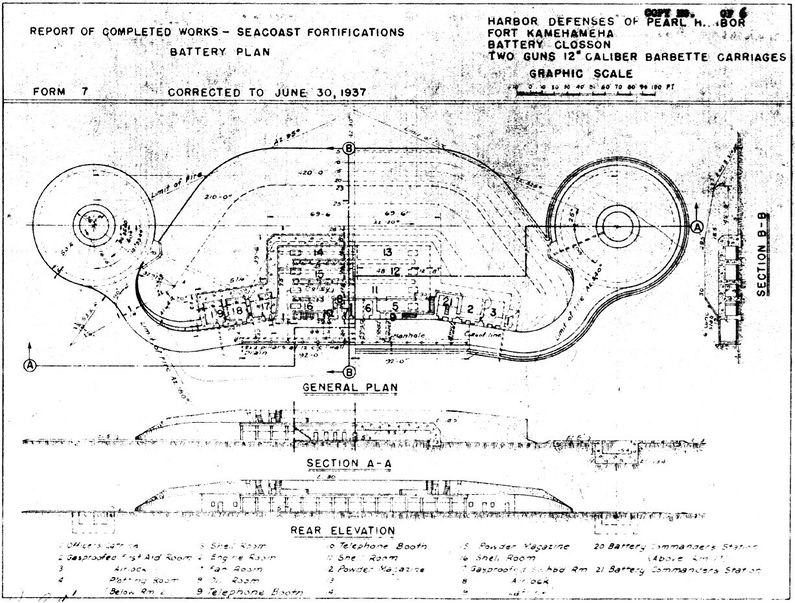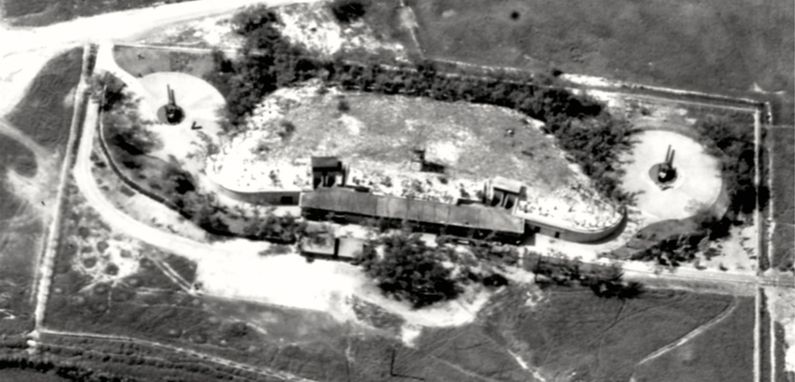Battery Closson
|
Battery Closson (1920-1948) - Battery Closson was a reinforced concrete, Taft Period 12 inch coastal gun battery at Ahua Point on Fort Kamehameha, Honolulu County, Hawaii. Named in G.O. 13, 1922, for Brigadier General Henry Whitney Closson (Cullum 1638), who served in the U.S. Civil War and who died 15 Jul 1917. Battery construction started September 1917, was completed in April 1920 and transferred to the Coast Artillery for use 4 May 1920 at a cost of $ 302,729.42. Deactivated in 1920.
Taft Period (1905-1915)Part of the Harbor Defense of Pearl Harbor. Originally built as a Taft Period concrete coastal gun battery at Ahua Point with two 12" M1895M1 guns mounted on M1917 Barbette carriages. This was a single story battery with the guns located on open concrete pads away from the magazine complex. Shells were moved from the magazines to the gun loading platform by shell carts. No shell or powder hoists were provided or needed. Electrical power was furnished by the emplacement power plant. The M1917 Barbette Carriage allowed gun elevations of 35 degrees and azimuth traverses of 360 degree.

World War I (1917-1918)The U.S. entry into World War I resulted in a widespread removal of large caliber coastal defense gun tubes for service in Europe. Many of the gun and mortar tubes removed were sent to arsenals for modification and mounting on mobile carriages, both wheeled and railroad. Most of the removed gun tubes never made it to Europe and were either remounted or remained at the arsenals until needed elsewhere. The guns of Battery Closson were not affected by the World War I redistribution or the following 1920 disarmament program. World War II (1941-1945)Battery Closson was a part of the Harbor Defenses of Pearl Harbor plan throughout World War II. The Battery was casemated in 1942. When the war ended in 1945 the battery was declared surplus. The guns and carriages were processed for salvage in 1948. Current StatusBattery remains on Hickam Air Force Base across from Mamala Bay Golf Course. No period guns or mounts in place.
Sources:
Links: Visited: No
| ||||||||||||||||||||||||||||||||||||||||||||||
